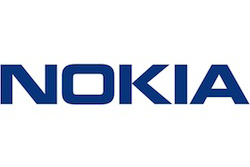Nokia Networks has bolstered its small cell portfolio by launching a new double capacity picocell, announcing new features and unveiling a 3D geolocation service for indoor planning.
The Flexi Zone G2 Pico is an 8kg and eight litre unit, with the first in the range being a 3.5GHz TD-LTE advanced carrier aggregation pico, with 4×4 MIMO for more developed LTE markets.
The pico will feature a four pipe radio and twice the processing power of Nokia Networks’ Flexi Zone Micro/Pico base station.
The vendor said it can serve as a standalone unit or be used in conjunction with its Flexi Zone Controller to build a cluster of numerous small cells which will act as an eNodeB. It said this would allow operators to create ultra-dense networks to offer higher capacity.
Ken Rehbehn, Principal Analyst at 451 Research Mobility Team, said: “Experience shows consumers enthusiastically embrace mobile broadband when operators deliver excellent LTE network performance – success that can threaten operator brand reputation if capacity fails to keep up.
“High performance small cell systems give operators a critical tool to absorb growing capacity demands without compromising customer experience. Nokia’s continued investment in its small cell portfolio smartly expands the range of capabilities and form factors available to operators responding to the challenge of success.”
It said the extension of its Services for HetNets portfolio would allow planners to differentiate between different floors of buildings, as well as different needs.
Randy Cox, Head of Small Cell Product Management at Nokia Networks, explained: “Operators have an ever-increasing need to provide users with the best mobile broadband experience in key indoor locations. The addition of unique 3-D geolocation technology ensures the best planning and optimization techniques for outstanding performance throughout these buildings – from the top floor boardroom to the ground floor cafeteria.”
Elsewhere, Nokia said it was launching 1.9GHz/PCS frequency support for its Flexi lite base station, new frequency variants for its Flexi Zone base stations, non-line of sight microwave backhaul for both its Flexi Lite and Flexi Zone products, as well as a new deployment model that sets up small cells in clusters and reduces project time to hours.
Read more:




